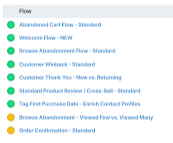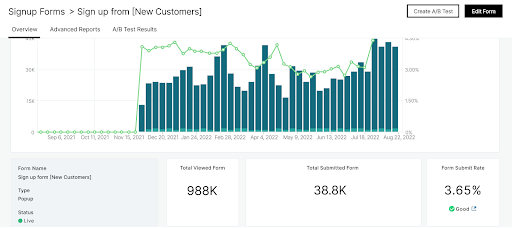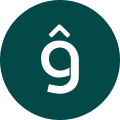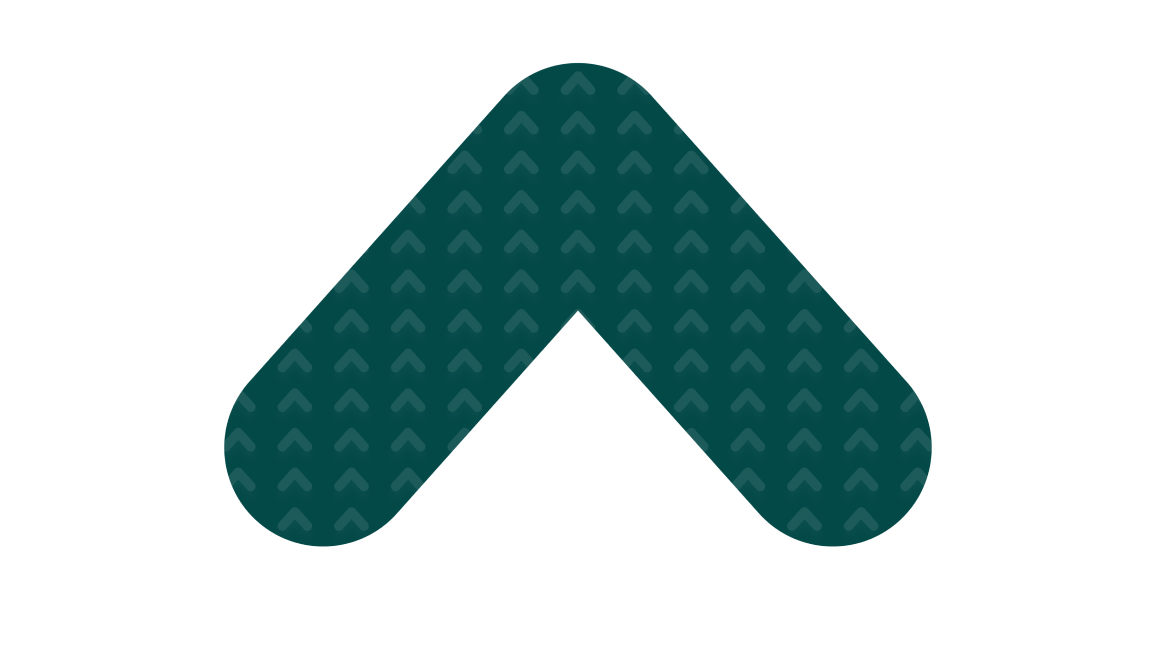
No marketing automation setup

No follow-up mechanism for drop-offs
The Tech Stack
| Tool | Use case |
|---|---|
| Klaviyo | Integrated for marketing automation. |

Our Approach
We began with running discovery calls to understand our client’s current ongoing marketing activities to find the touch points that can help us achieve success with a customer.
Next, our experts deep dived into our client’s day-to-day ops and business activities to create an action plan for their email marketing automation efforts.
Since our client had never explored marketing automation as a channel, we had to build out the entire system from scratch. And after a thorough discovery, we decided to target customers through 3 types of campaigns:
- Pop-up
- Flows
- Ad Hoc
Next, we decided to automated flows based on the following criteria:
- Welcome Series
- Abandoned Cart
- Browse Abandoned
- Customer Thank You
- Customer Winback
- Standard Review
- First Purchase flow
Once the flows were finalized, we appointed our in-house content and design team to create the emails based on the brand guidelines.
The Solution

Signup Forms
Once our team wrapped up the design and copy requirements, we deployed forms on the website to capture customer information.
- For customers who visited the website but were not our client’s customers, we created a pop-up form to capture a new visitor’s details. We included an offer on the form for new users coming to the website to subject their email submission.
- Further, we created two separate forms for desktop and mobile for enhanced user experience, so everything was clearly visible no matter the device of choice of the customer.
Welcome Series Flow
Next, we decided to run a trust building exercise for our client. Sans referral or previous experience, visitors on a website have little reason to trust any brand.
Considering this, we wanted to build a relationship of trust with converted customers and deployed a ‘Welcome’ email series for new customers to onboard and familiarize them with the brand.
Abandoned Cart Flow
We noted that customers on our client’s website were adding products to the cart, however, they were not completing the purchasing and dropping off the website.
To solve this, we wanted to gently nudge the customers to make the purchase – and we did this through the ‘Abandoned Cart’ flow which sent a mail to the customer with a reminder and details of the product left in the cart.
Historical Analysis
We mined the existing contact base and all previous customers who had either purchased or communicated with our client to run a ‘Customer Winback’ flow for them, showcasing offers and current products lines to reignite previous customer relationships.
Segmentation
To deliver customized experiences to our client’s customers, we decided to segment customers based on user behavior and activity on the website. We wanted to deliver targeted campaigns to a curated roster of customers for the best user experience.
We deep dived into Google Analytics to acquire information such as sessions and geography, Hotjar to get heatmaps of website sections where a segment spent most of their time, to understand which users are actually visiting the website and how they interact with our client’s website.
Based on this data, we created the following segments:
- Users who opened an email in the last 30 days
- Users who clicked on an email link in the last 30 days
- Users who clicked on an email link by did not make a purchase
- Users who only made a single purchase
- Users who made multiple purchases
- Users who made their last purchase >6 months ago
- Most visited pages by a user
Impact and Outcomes
Our implementation of Klaviyo’s marketing automation solution for the client resulted in significant revenue growth and customer engagement.
38,000+ form submissions
$150,000 in revenue in under 10 weeks
8% increase in returning users
-
After implementing the sign up forms, we were able to achieve 38,800 net new form submissions.

-
Further, we were able to generate over $150,000 in revenue for our client through email automation alone in under 3 months of implementation.



